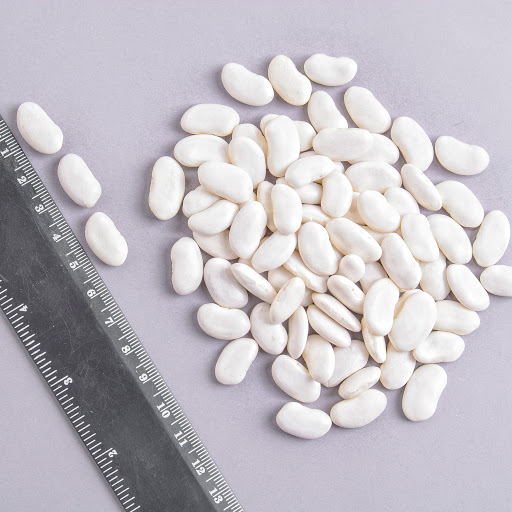25 February 2021
What size is that bean? The answer is not simple.

We recently got asked a question by a customer that stumped us. They had received our spec for a Black Turtle Bean and said they would have trouble using them as they were only 4mm long and would turn to mush.
Something didn't sound right. We grabbed our sample and measured them. Some were 11mm, some were 13mm long. Even wide they were 7-9mm. Then we figured it out, measure the depth – and yes that is the narrowest dimension – clocking in above 5mm.
Now one of our key suppliers of beans is Hensall and their specification says for different beans that they are sized above 4mm – 4.8mm, depending on the this specific type.
We eventually determined that this size is based on the smallest dimension, since when the beans are passing over sizing screens (sieve) they may be at any angle – so it is only ever realistic to screen out based on the smallest dimension.
This means they exclude splits, small foreign material, beans that haven't grown to maturity amongst other products that may be taken in by a harvester.
The fact that our Black Turtle Beans are 11mm – 13mm long may be obvious to anyone who has purchased our products over time, or just knows that the exact size varies considerably growing region, seed variety chosen and moisture/heat variability in the growing season.
The experts in the operational heart of processing beans gave up their opinion, but we thought this quote from an operations manager Wim, in Ontario Canada hit the spot.
“Beans are much like people. You can sort them any which way you want and there will always be differences. Beans are a product produced by nature and not a manmade manufactured product to a specific spec.”
Some researchers have gone to extreme lengths to measure the different genetic cultivar sizes and given many beans have an irregular shape we see physical measurements along the following dimensions:
Length
Breadth
Thickness
Length-breadth ratio
Equivalent diameter
Sphericity %
Aspect ratio
Seed volume (mm3)
Surface area (mm2)
Bulk density (kg/L)
True density (kg/L)
Porosity(%)
100 seed mass (g)
seed count per 100g
100 seed volume (mL)
Angle of repose (0)
So in the spirit of there is no such thing as a stupid question, we will be adjusting our specifications where to clarify the meaning of an industry and perhaps manufacturer specific sizing terminology like the following quote.
size: 98% over 4.8mm (12/64" slot) screen
As a quick aside, some products like Chickpeas are simpler. They are approximately spherical and so the measurement in any dimension is consistent. In products like that we see quite specific sizing as a product attribute for instance you can buy a 7mm chickpea all the way through to an 11mm Jumbo and their are the screen sizes and % of product that passes over it should match what is being sold.